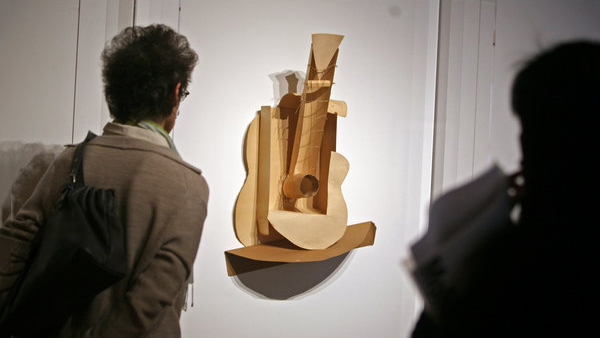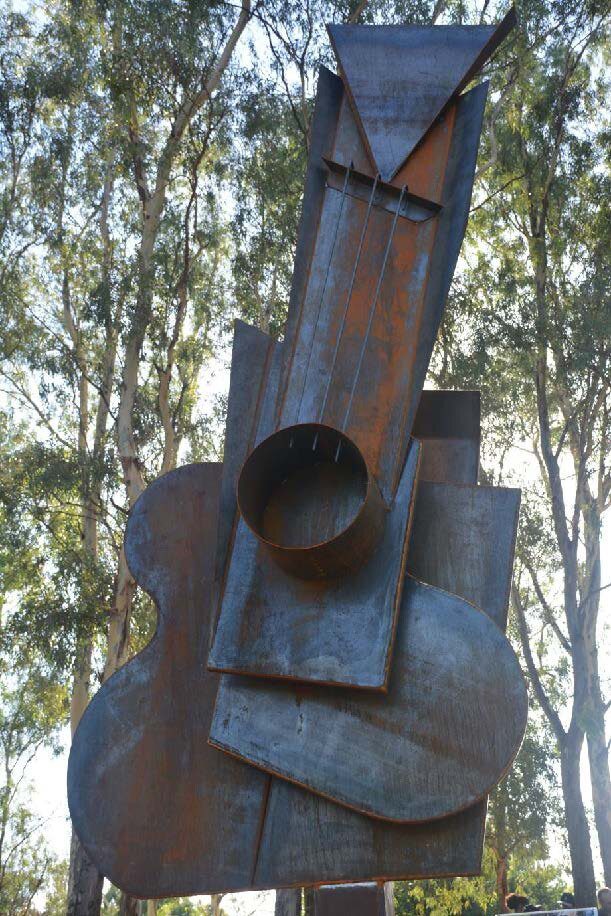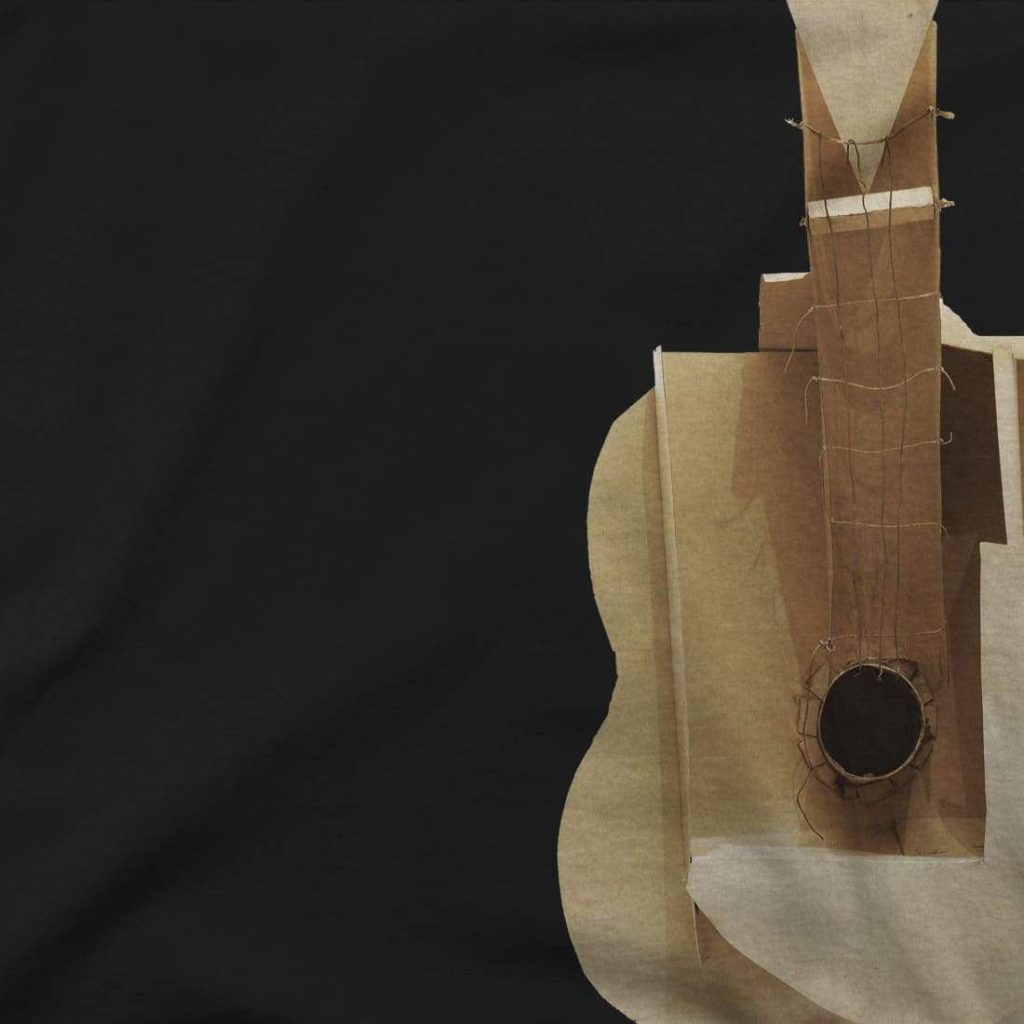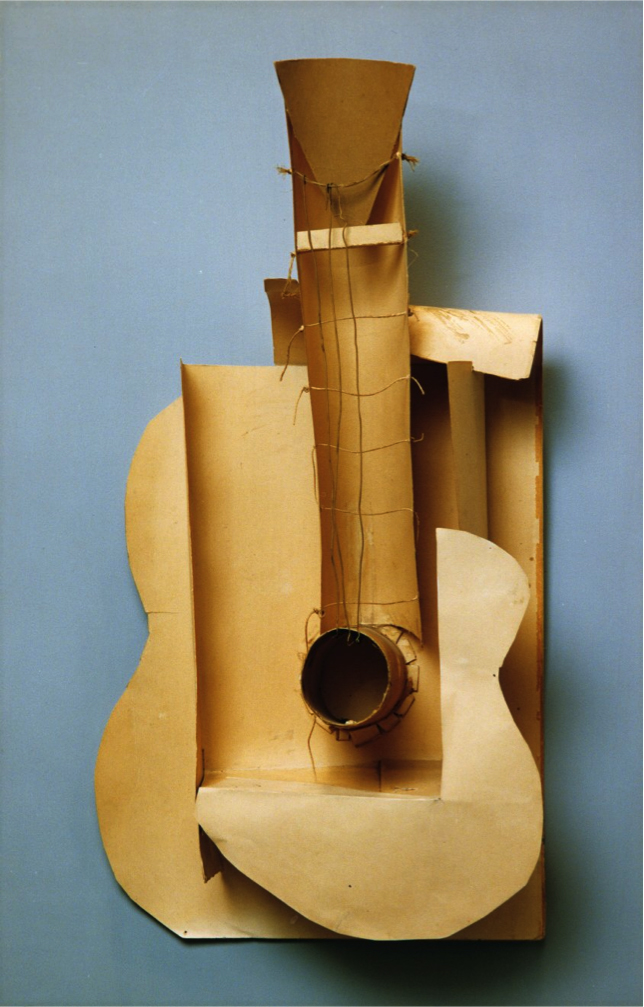Introduction

The Guitar by Picasso is a masterpiece in 20th century art history, representing Picasso’s innovation and breakthrough in the field of sculpture. This article will provide an in-depth introduction to the origin, historical background, artistic characteristics, and significant impact of guitar sculpture on 20th century art.
The Birth of Guitar Sculpture

Picasso’s creative background
Pablo Picasso was one of the most outstanding artists of the 20th century, known for his prolific and diverse creations. In 1912, Picasso created a sculpture model made of cardboard, which was the predecessor of guitar sculpture. During this period, he frequently explored the theme of guitar in painting and collages, and attempted to transfer the cutting and pasting techniques of collages from two-dimensional art to the three-dimensional field.
From planar to three-dimensional
The creation of guitar sculpture was a transformation from graphic art to three-dimensional art for Picasso. It combines the flat shapes of collages together to create a polyhedral form that has both depth and volume. The innovation of Picasso lies in his abandonment of traditional sculptural methods, no longer carving and shaping solid blocks, but assembling the components of guitar sculpture together like a building structure.
The Appearance of Guitar Sculpture

Structure and shape
The appearance of guitar by Picasso is unique and abstract. It has a guitar theme, but it is not a traditional guitar image. On the contrary, it is composed of various flat and curved shaped fragments that intersect with each other, forming an abstract and geometric structure. This structure gives sculpture a sense of modernity and complexity.
Polyhedrality and depth
The multifaceted nature of sculpture allows the audience to appreciate it from different perspectives. Different angles present different shapes and lines, enhancing the richness of the viewing experience. The depth of guitar sculpture also makes people feel the charm of three-dimensional art. It not only guides the audience’s gaze visually, but also occupies a certain position in the space.
Materials and craftsmanship
Initially, guitar sculptures were made of cardboard, but later in Picasso’s creative career, he created different versions of the sculpture on this theme, including the tin version. This material selection emphasizes the modernity of the sculpture, while also increasing its stability and durability.
The impact on art

Innovation in the field of sculpture
Guitar by Picasso represents a major innovation in the field of sculpture. Picasso’s creative method breaks the traditional concept of sculpture and encourages artists to try new materials and construction methods. This innovative spirit had a profound impact on sculpture art in the second half of the 20th century.
From Constitutionalism to Minimalism
The structural and abstract nature of Picasso’s guitar sculptures influenced later artistic movements, including Russian constructivism and minimalism. These movements emphasize the importance of structure and geometric shape, and share similarities with the formal expression of guitar sculpture.
From collage to three-dimensional
Guitar sculpture has shifted the techniques of collage art to the three-dimensional field, which is of great significance for the development of sculpture and three-dimensional art. It provides artists with a new way to create abstract and constitutive works in three-dimensional space.
Epilogue

Uberto Boccioni is an outstanding Italian artist, whose exploration of dynamism and deconstruction of form injected new vitality into 20th century art. Although his life is short, his role in the Futurism movement and his artistic heritage will always be cherished and commemorated. Boccioni’s works have inspired artists to pursue new ideas and forms, contributing valuable heritage to the development of the art world.

